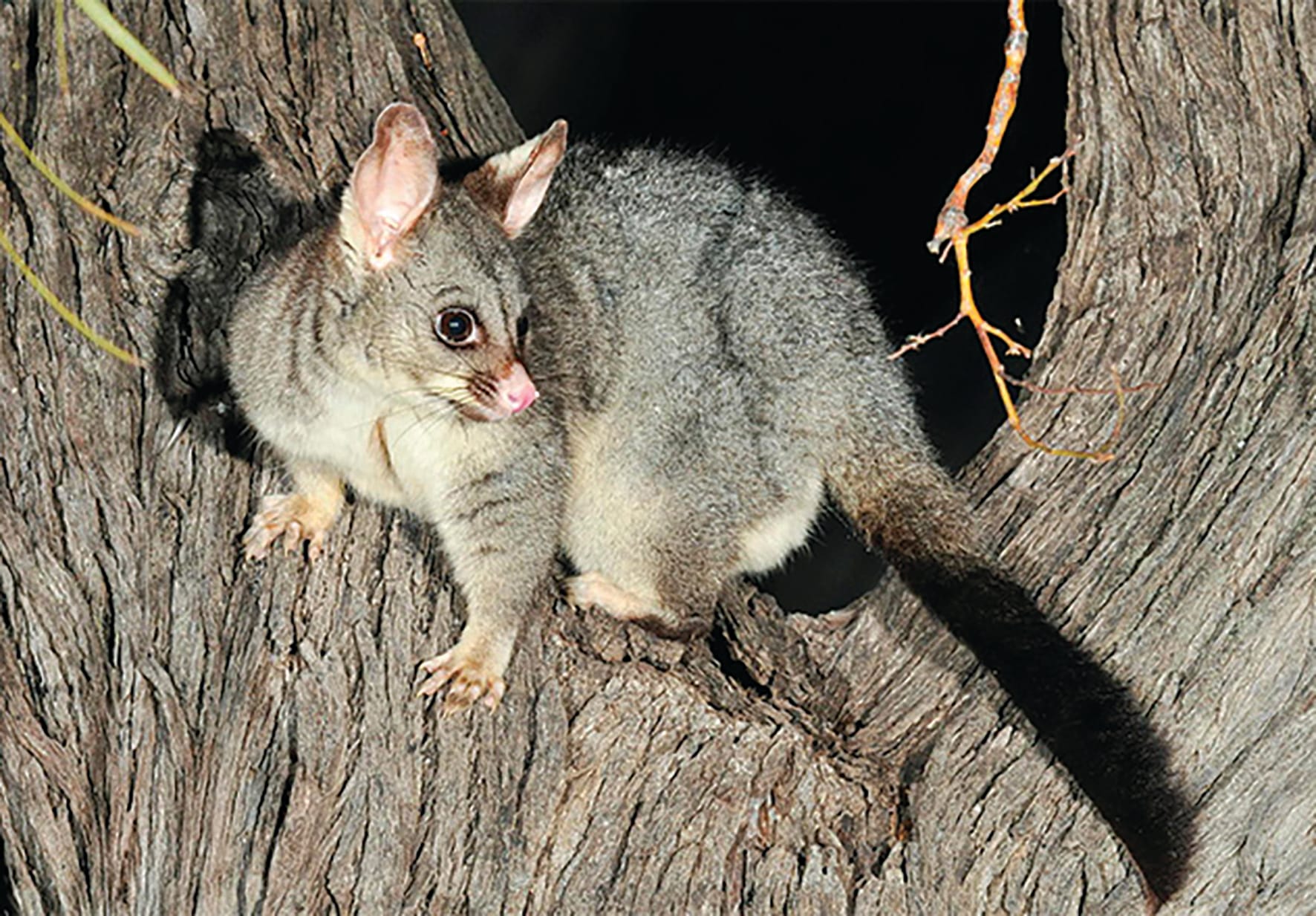Brushtail possum extinct?

How can this be? The brushtail possum is so common and is considered by many to be a pest! However, the truth is that the brushtail possum (Trichosurus vulpecula) has become locally extinct in a number of regions and endangered in others. Being nocturnal it is often difficult to know if the brushtail has become extinct in some areas.
The extinctions have occurred mainly in arid and semi-arid regions where limited resources for the possums meant that they were thinly spread, making them quite vulnerable. In many central Australian regions, the possums nest in rock shelters if there are no suitable tree hollows, making them far more vulnerable to predators. The spread of foxes and feral cats into these areas proved to be by far the biggest driver of possum population extinctions. It is also believed that the rapid decline in the rabbit populations forced these introduced predators, as well as dingoes, to switch their prey to other species including the brushtail possum. Feral grazing animals causing habitat degradation also impacted upon the possums. In the northern part of the Western Australian wheatbelt the clearing of possum habitat for agriculture was a major factor. In central Australia, the removal of Indigenous Australians from Country put an end to cultural burning, allowing vegetation to grow unchecked. When fires did break out, they were large and burnt very hot, destroying the food plants of the possums over huge areas. If the possums survived the fires, they were left with little or no food.

The brushtail possums are important pollinators of many of their food plants and are also important for seed dispersal. They control the spread of mistletoe by eating the fruit before the mistletoe birds can spread the seeds to other trees.
Simply reintroducing the possum to the areas where it has become extinct is not so easy. First the issues causing its extinction must be addressed and then the appropriate subspecies needs to be found (there are six subspecies) in sufficient numbers to be relocated.
With the return of Uluru to the local Indigenous Australians and the development of a joint management plan with the National Parks Service, cultural burning has returned to the Uluru area promoting diversity in its ecology. The brushtail possum is being introduced into the rejuvenated ecosystem.
Surprisingly, the brushtail possum became locally extinct in the Ikara-Flinders Ranges National Park with its magnificent redgums along the creeks providing many hollows. With cats and foxes semi under control, the brushtail possum and the western quoll were reintroduced to the National Park in 2014. Both species have done reasonably well and are spreading along the creek lines within the Park.
In Western Australia the small remnant parcels of uncleared possum habitat were connected with wildlife corridors and some possums introduced. Recently a camera trap in the region photographed a brushtail; the species was spreading through the region along the wildlife corridors.
Until recently it was thought that the brushtail was also locally extinct in the Macdonnell Ranges in central Australia. The finding of possum scats lead to the discovery of several small isolated populations and a management plan has been put in place to preserve them.
It is ironic, considering the number of introduced species wreaking havoc in Australia, that the brushtail possum was introduced to New Zealand where it quickly became a pest species. One of its biggest impacts on the ecology of New Zealand is the brushtail’s appetite for bird’s eggs and nestlings.
So next time you are being kept awake by cavorting possums or find they have done a raid on your fruit trees, just think how lucky you are to have them!










